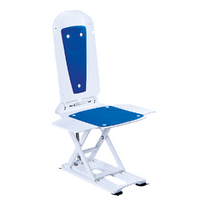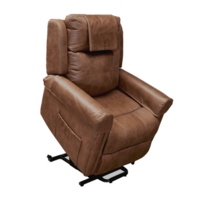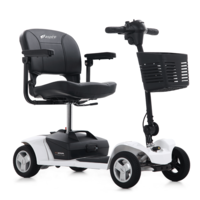Can Tai Chi Help Improve Your Arthritis?
The general health benefits of Tai Chi have long been promoted. But evidence shows this practice can be particularly beneficial for people with arthritis, helping to improve movement and relieve pain.
If you’re curious about starting Tai Chi or looking for alternative ways to alleviate your arthritis symptoms, read on.
What is Tai Chi?
Tai Chi is a traditional Chinese form of martial arts involving slow, smooth and controlled movements. The use of breathwork and focus on the energy flow through the body (known as Qi) also offers relaxation and meditation benefits.
Tai Chi is widely practiced in China, as well as throughout many other parts of the world. Because it involves slow and gentle movements, it’s suitable for a wide range of people. It’s easily accessible with no special equipment needed. It’s also easy for beginners to start, but offers complexity that will continue to challenge you as you master various movements and positions.
Benefits of Tai Chi for arthritis
Various studies have looked into the benefits of Tai Chi for health and wellbeing. These have shown that regular Tai Chi practice can help to:
-
increase muscle strength,
-
improve stability and balance, and
-
reduce stress.
Research has also shown that Tai Chi can be particularly beneficial for people with arthritis. In one Boston study published in the Annals of Internal Medicine, participants with osteoarthritis in the knee were assigned to a 12 week program that involved either standard physical therapy or Tai Chi.
After the course of treatment was finished, both groups showed improvements in the amount of pain they experienced. However, the Tai Chi group also reported improvements in their mental health and quality of life.
This suggests that the benefits of Tai Chi go beyond the physical improvements and can help people with arthritis to improve their sense of wellbeing.
Further research into the benefits of Tai Chi for arthritis by Dr Paul Lam has shown a reduction in joint pain and stiffness and overall improvement of wellbeing. Dr Paul Lam developed the modified Sun-style of Tai Chi specifically for people with arthritis.
How to get started with Tai Chi
Find a class near you
The easiest way to get started with Tai Chi is to look for a class near you. Going to a class (particularly one aimed at beginners) means there’ll be an instructor there who can teach you the basics movements and help you adapt certain positions to suit your level.
-
Search online for a Tai Chi class with you and arrange a phone call with the instructor or director to find out about classes suitable for people with arthritis.
-
If offered, attend a trial or beginner class first to observe and decide if Tai Chi is right for you.
-
Let the instructor know about your arthritis and any particular limitations or concerns you have.
-
Go at your own pace. If you need to take a break during the class, do so. You don’t have to be an expert right away.
-
Focus on the process, rather than the results. It might take time to see significant improvements, but you should see the benefits after a couple of months of regular practice.
Take an online class
If there aren’t classes near you, or getting to a regular class is difficult, then you can also find Tai Chi classes online or on DVD. The benefit of a virtual class is that you can watch it at a time that suits you. But you won’t have someone checking your position and movements, which can lead to incorrect form.
Tai Chi for arthritis program
As well as general Tai Chi classes, Arthritis Australia recommends Tai Chi classes that have been adapted to suit people with arthritis.
The Tai Chi for Arthritis program was developed in 1997 by Dr Paul Lam, with the help of Tai Chi masters. The program features a series of positions that are safe and effective for people with arthritis. Teachers that have been trained in the program also have knowledge of arthritis and what positions are safe.
You can find out more about this program and available classes from Arthritis Australia.



























